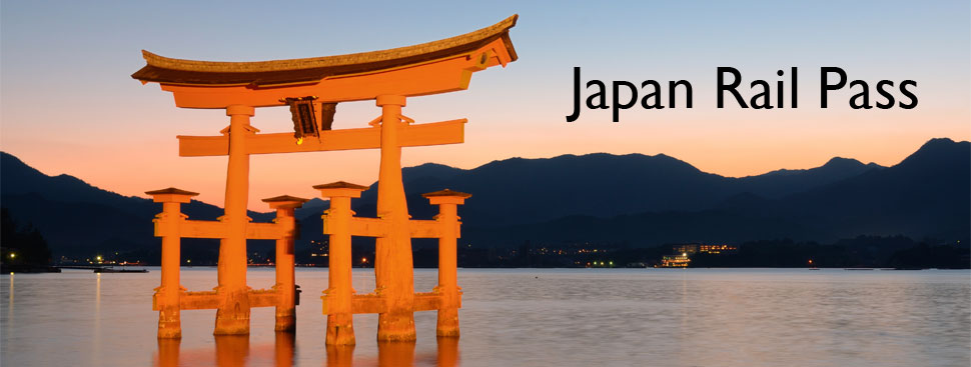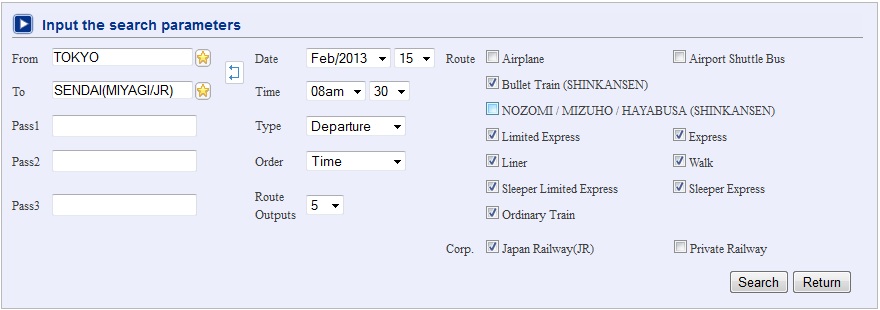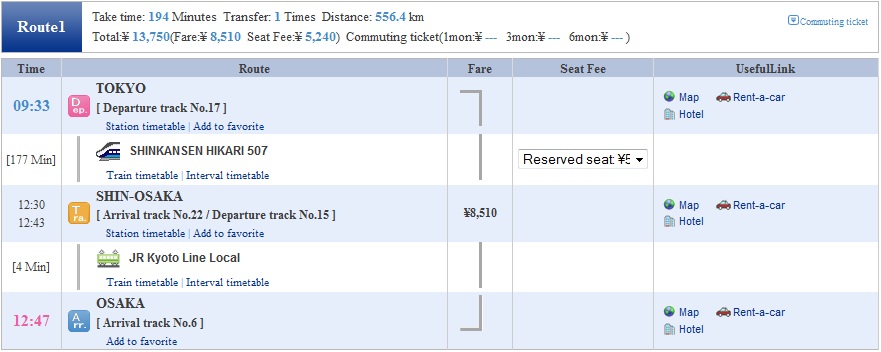AdviceWondering how to connect your journey from one place to another? You can take the worry out of planning your trip by using Hyperdia.
Please note that those who wish to plan their travel and use a Note: HAYABUSA is actually covered by a Japan Rail Pass for those planning a trip to
The results of an example trip from Tokyo to Osaka are shown above. Please keep in mind that train services are regular and punctual so even if you miss a connecting train, the wait for the next train is usually not too long. |
|
|||||
|
Saizen Tours has an interactive travel information map that provides information on a wide range of places in Food for the hungry and time-poor traveller on a budget This is not a complete list of the food available in Cafes near or inside train stations usually offer coffee (hot and iced) and other drinks. Light and simple meals such as spaghetti with various sauces, Japanese curry and rice (usually mild), sandwiches and unique specialties such as Omuraisu (An omelette with chicken rice in a tomato based sauce inside) and gratin (usually a rice or pasta-based dish with cream sauce baked with a browned cheese topping). For those who are lucky enough to be departing or arriving at a main station, you may find that there is a major department store attached to the train station where a wide variety of restaurants and places for a quick bite to eat are also options for you. In the immediate area outside and around train stations, there are usually places to eat and drink which offer fast service and at a reasonable price. Ramen (Chinese noodle soup) shops offer noodles in different flavours of soup such as Shoyu (Soy sauce- this is the traditional flavour of ramen) and Miso (Bean Paste) with a variety of toppings. You can order Gyoza (dumplings) with your Ramen which makes for a delicious and filling meal. For those who wish to buy their food and drink on the run, there is usually one of the many convenience stores in As a side note, there may be temporary stalls near or directly outside a train station selling things such as Takoyaki (Octopus dumplings), Taiyaki (Fish-shaped cakes filled with sweet red bean paste or custard), or Yakisoba (fried noodles). These are either run by local residents at the time of a festival or by itinerant vendors whose main business is making and selling such food. Have you lost something while on a train on the JR network? You might be extremely worried that your item has been gone forever. Perhaps it was a valuable item or something of importance. Luckily, Japan Rail East has a lost and found department that holds any items left on trains. You can contact their International support line on (050) 2016-1603 where you will be able to get support in English, Korean or Chinese. JR Central and JR West lost and found lines can only be accessed in Japanese (in this case you could ask your hotel to call on your behalf or ask a JR employee to contact them if you don't speak Japanese). These hotlines will be able to let you know where you may need to go to be reunited with your lost item. |
||||||


